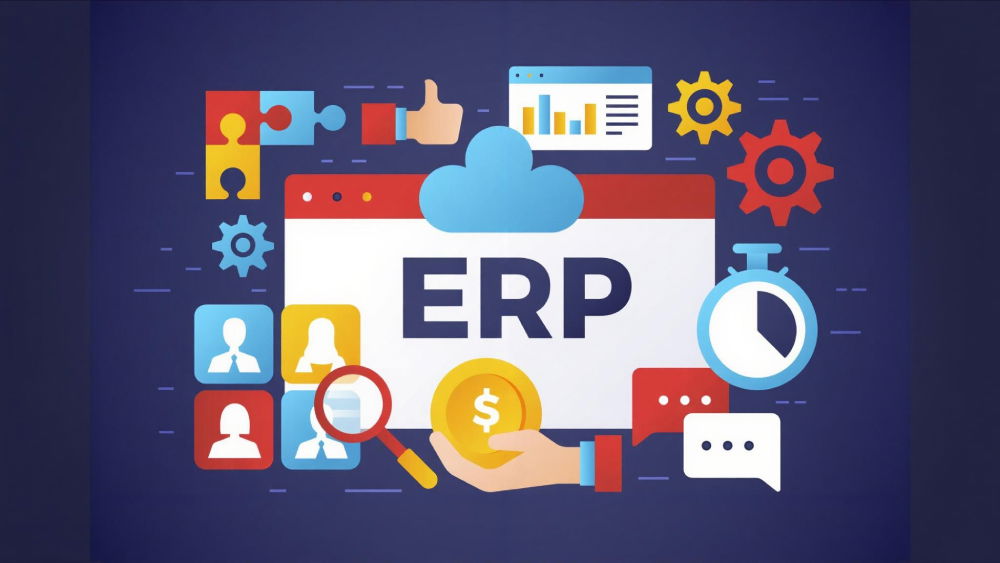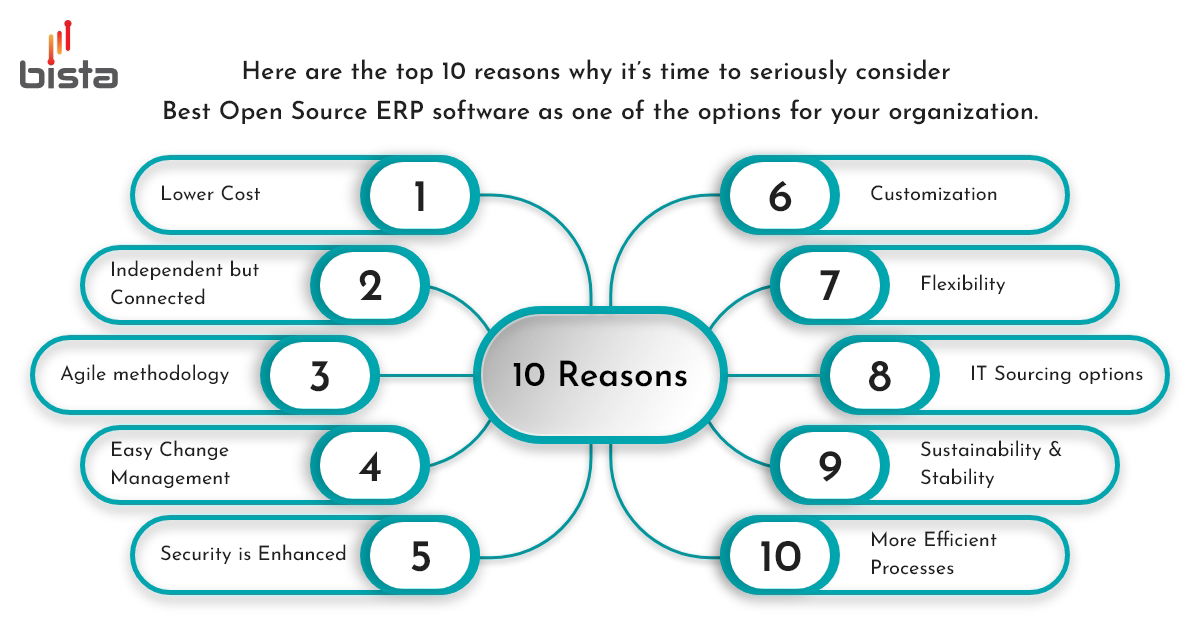A Small Guide On ERP Implementations
Implementing an enterprise resource planning (ERP) system can be a complex undertaking that affects many parts of the business. As with any major initiative, a carefully designed implementation plan is essential. Dividing your implementation into phases, each with specific goals can help you achieve success. This ERP implementation guide will show you how to achieve these advantages by defining the essential steps and best practices for a successful ERP implementation.
Introducing ERP System
An ERP system is excellent for cost reduction, and by improving collaboration, it can help you significantly increase productivity and efficiency, resulting in high-quality customer service and allowing you to stay ahead of your competitors.
You should use ERP software for various reasons, but how do you ensure it is properly implemented? Here are the key steps for a successful ERP implementation.
Define Clear Objectives and Requirements
Before initiating the ERP implementation, define clear goals and objectives. Understand why you need an ERP system and what challenges it will solve. Identify the specific business processes you want to improve and define the desired results.
Key Actions:
- Define project objectives and success criteria
- Identify key processes and pain points to address
- Set specific goals
Select the Right ERP Software
Choosing the correct ERP system is critical. Consider various solutions based on your company’s needs, budget, and future growth plans. Consider factors like usability, functionality, scalability, and integration capabilities.
Key Actions:
- Research multiple ERP vendors and request demos
- Evaluate software features against your requirements
- Consider scalability, customization, and integration options
Assemble a Dedicated Project Team
An ERP implementation requires a dedicated team with defined roles. Include representatives from IT, finance, human resources, operations, and other departments that will be using the system. Assign a project manager to monitor the entire process.
Key Actions:
- Create a project team that includes representatives from each department
- Assign a project manager to coordinate tasks and timelines
- Define your roles, responsibilities, and communication channels
Develop a Comprehensive Implementation Plan
Create a detailed plan outlining each stage of the implementation process. Include a timeline, milestones, and responsibilities. A well-structured plan keeps the project on track and ensures that everyone is aware of their responsibilities and tasks.
Key Actions:
- Outline the key phases of implementation (planning, testing, training, etc.)
- Create realistic timelines and milestones
- Create a budget for software, hardware, training, and support
Map and Optimize Business Processes
Review and document your current business processes prior to implementing the ERP system. Find inefficiencies and areas for improvement. This step ensures that your ERP implementation streamlines and improves your workflows rather than repeating existing problems.
Key Actions:
- Document your current workflows and processes
- Identify inefficiencies and opportunities for improvement
- Redesign processes in accordance with the ERP system’s capabilities
Data Migration and Preparation
Data migration is the process of transferring existing data from legacy systems to the new ERP platform. This is a critical step because inaccurate or incomplete data can cause operational issues.
Key Actions:
- Clean and organize your data to eliminate duplicates and outdated information
- Create a data migration strategy, including mapping and testing
- Conduct pre-launch tests to ensure data accuracy and integrity
Configure and Customize the ERP System
Customize the ERP system to meet your specific business needs. This may include configuring modules, user permissions, and workflows. However, excessive customization may complicate updates and maintenance.
Key Actions:
- Configure the system’s settings, user roles, and security controls
- Customize workflows and reports as needed
- Test the configurations to ensure that they meet business needs
Integration with Other Systems
Check that your ERP system is compatible with other software solutions, such as CRM systems, e-commerce platforms, and third-party tools. Integration improves data flow and reduces the need for manual entry.
Key Actions:
- Identify systems that must be integrated with the ERP
- Develop an integration strategy and a data synchronization plan
- Integration tests are performed to ensure that platforms run smoothly
Thorough Testing of the ERP System
Prior to going live, conduct extensive testing. Testing aids in identifying any issues or bugs in the system, ensuring a smooth launch. Involve end users in the testing process to ensure that the system meets their needs.
Key Actions:
- Perform unit, system, and user acceptance testing
- To identify potential problems, simulate real-world scenarios
- Adjust as needed in response to feedback
Provide Comprehensive User Training
A successful ERP implementation is dependent on how well your team can use the new system. Organize training sessions to ensure that all users are familiar with the software and understand how it benefits their workflows.
Key Actions:
- Develop a training program for diverse user groups
- Offer hands-on training, user guides, and online resources
- Encourage feedback to help improve the training process
Go Live and Monitor the System
Once testing and training are finished, it’s time to go live. To minimize disruption, consider a phased rollout beginning with specific modules or departments. After going live, closely monitor the system to address any issues quickly.
Key Actions:
- Plan a phased rollout or a full-scale launch depending on your strategy
- Monitor system performance and address issues promptly
- Collect user feedback to make improvements after the launch
Post Implementation Support and Continuous Improvement
ERP implementation is not a one-time occurrence. Provide ongoing support to resolve any technical issues and ensure continuous improvement. Review system performance on a regular basis, update features as needed, and adapt to changing business needs.
Key Actions:
- Establish a support team for troubleshooting and user assistance
- Schedule regular system reviews and updates
- Continuously improve the system based on user feedback and business growth
Common ERP Implementation Mistakes To Avoid
ERP implementation can be a complex process, so it’s important to be aware of common mistakes that can occur during the implementation process in order to avoid them. The following are some of the most common ERP implementation mistakes to avoid.
Not Involving Key Stakeholders
Failing to include key stakeholders in the ERP implementation process may result in a lack of project buy-in and support. Include stakeholders from different departments in the planning and implementation process to ensure that the system meets the needs of all users.
Underestimating The Complexity Of The Project
ERP implementation can be a complicated and time-consuming process. Underestimating the project’s complexity can lead to delays and increased costs. Before you begin the implementation process, make sure you understand the project’s scope and complexity.
Not Having A Clear Plan And Timeline
Without a clear plan and timeline, the implementation process can become unorganized and chaotic. Create a detailed plan and timeline to ensure that the project stays on track and gets completed on time.
Not Having A Dedicated Implementation Team
ERP implementation necessitates the formation of a dedicated team of professionals with the necessary skills and expertise. The lack of a dedicated implementation team can result in delays and increased costs.
Not Providing Adequate Training
Proper training is necessary to ensure that employees can effectively use the new ERP system. Inadequate training can result in a lack of adoption and a failure to realize the ERP system’s full potential.
Not Providing Ongoing Support And Maintenance
ERP systems require ongoing support and maintenance to ensure that they continue to function correctly and meet the needs of the organization. Not providing ongoing support and maintenance can lead to a failure to realize the full potential of the ERP system.
How Long Does ERP Implementation Take To Go Live?
The implementation of an ERP solution can take anywhere between 2 and 9 months, depending on the number of software services and/or modules being implemented. The number of users and the level of customization required on an ERP system will all impact the timeline for implementation.
Tips For Avoiding Extra ERP Implementation Costs
Choose the Right ERP Vendor and Implementation Partner
Choosing the right ERP vendor and partner is essential. Ensure they understand your company’s requirements, can deliver within your budget, and have a track record of successful implementations.
Avoid Over-Customization
Customizing an ERP system can be expensive and time-consuming. Customization is required to some extent, but excessive alteration can increase the cost of development, testing, and maintenance.
Ensure Proper Integration Planning
Plan these integrations carefully if your ERP system needs to interface with other software programs (e-commerce, CRM, etc.). Ineffective planning can result in incompatibilities and higher rework costs.
Conduct Thorough Testing
Skipping or minimizing the testing phase to save time can lead to more significant problems and costs later. Proper testing helps identify and fix issues before the system goes live.
Monitor Project Scope to Prevent Scope Creep
Scope creep occurs when the project expands beyond the original plan, leading to additional costs and delays. Define a clear project scope and stick to it as much as possible.
Opt for Cloud-Based ERP Solutions
Because cloud-based ERP systems don’t require a lot of hardware, infrastructure, or IT maintenance, they frequently have lower upfront costs than on-premise solutions. Additionally, cloud solutions are more scalable, which makes cost management simpler as your company expands.
Bista Solutions | Your Ideal ERP Implementation Partner
Implementing an ERP solution in your organization may be one of your best decisions. Although it takes time and careful planning, your efforts will pay off in the long run if you make the transition to the new system as seamless as possible.
Bista Solutions has been providing robust business solutions to countless organizations for over three decades. The experts at Bista Solutions will understand your ERP needs and implement the ERP solution accordingly. You can even rely on Bista Solutions experts for ongoing support for your ERP system. For more information or to implement ERP in your business, contact our team of experts for a free consultation today.






 Do not that since the software is available freely it doesn’t mean of low value in terms of features – the features and capabilities of Open source ERP software is much way stronger than proprietary. There are community members who are contributing towards new ideas everyday to help various organizations. Same as Wikipedia users contribute to make the article stronger enough for the users.
Do not that since the software is available freely it doesn’t mean of low value in terms of features – the features and capabilities of Open source ERP software is much way stronger than proprietary. There are community members who are contributing towards new ideas everyday to help various organizations. Same as Wikipedia users contribute to make the article stronger enough for the users.

